
Caption
Wildlife Technician Trip Kolkmeyer operates the 26-foot Georgia DNR boat from Brunswick on Jan. 26, 2025.
Credit: Justin Taylor/The Current GA
With special permission from the National Oceanic and Atmospheric Administration, The Current’s Mary Landers and Justin Taylor accompanied a team of Georgia Department of Natural Resources (GA DNR) biologists on a survey for North Atlantic Right Whales off the Georgia coast.
All photos were taken by Taylor under GADNR/NOAA Permit #26919. Federal law requires vessels to stay at least 500 yards away from North Atlantic right whales anywhere in U.S. waters.
From December through March every year, the waters off Georgia’s coast provide calving grounds for the estimated 70 remaining reproductively active female North American right whales, one of the world’s most endangered large whale species. During this calving season, a team from the GA DNR Wildlife Resources Division conducts surveys to monitor the presence of right whales, alert marine traffic to minimize the threat of vessel strikes, document calf production, and to spot injured whales or whales entangled in fishing gear.

Wildlife Technician Trip Kolkmeyer operates the 26-foot Georgia DNR boat from Brunswick on Jan. 26, 2025.
Around 8 a.m., the GA DNR biologists climb aboard the 26-foot RV Timucua, a semi-rigid inflatable boat, and leave the dock in Brunswick.
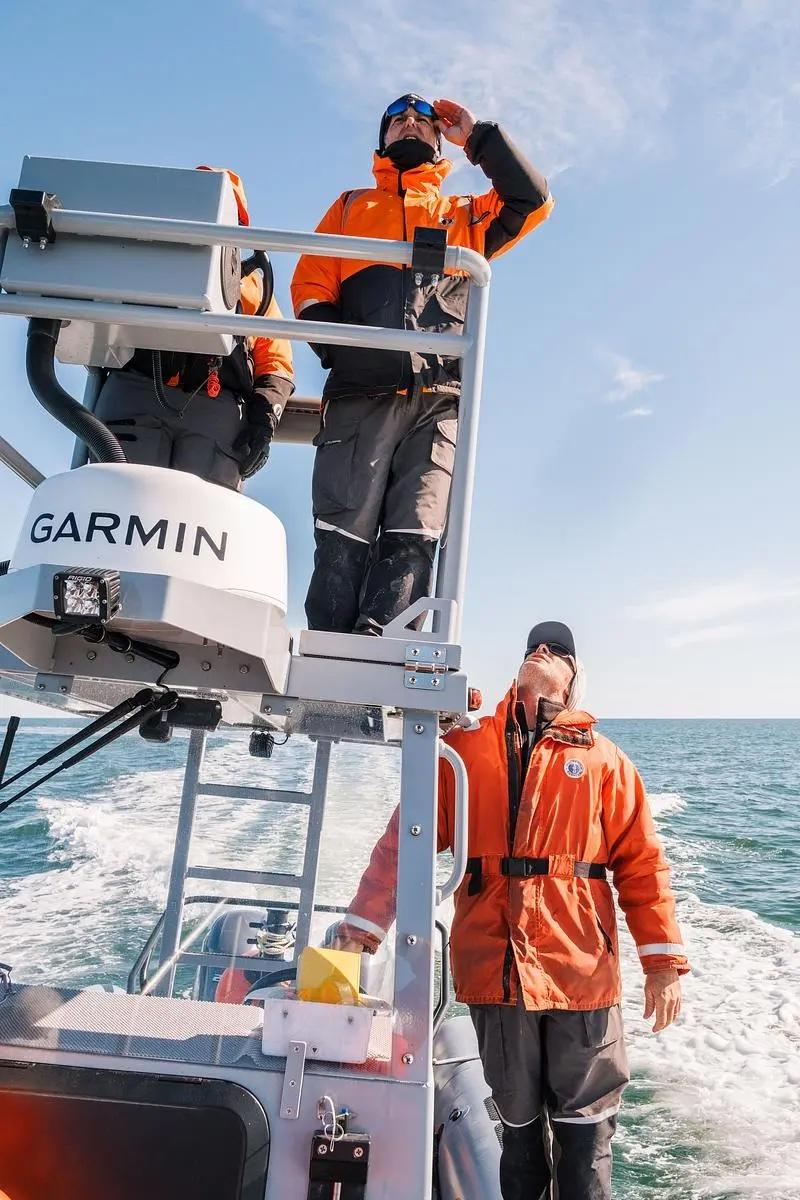
Senior Wildlife Biologist Mark Dodd and Wildlife Technician Trip Kolkmeyer search for an endangered North Atlantic right whale near St. Marys on Jan. 26, 2025.
Once in the calving ground, roughly seven miles from shore, the boat crew keeps a lookout for signs of whales breaching the surface of the water.
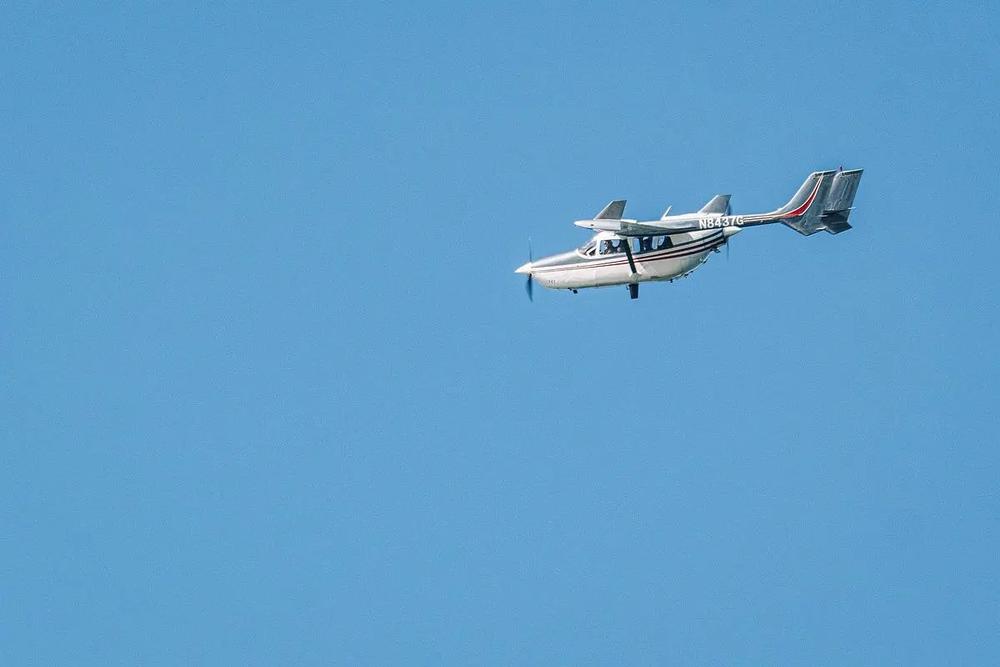
The GADNR aerial survey team flies a search pattern off the Georgia coast looking for endangered North Atlantic right whales off Brunswick on Jan. 26, 2025.
In tandem with the boat crew, an aerial survey team flies an east-west search pattern along the coast that ranges up to 40 miles offshore. The team relays any sightings to the crew on the water.
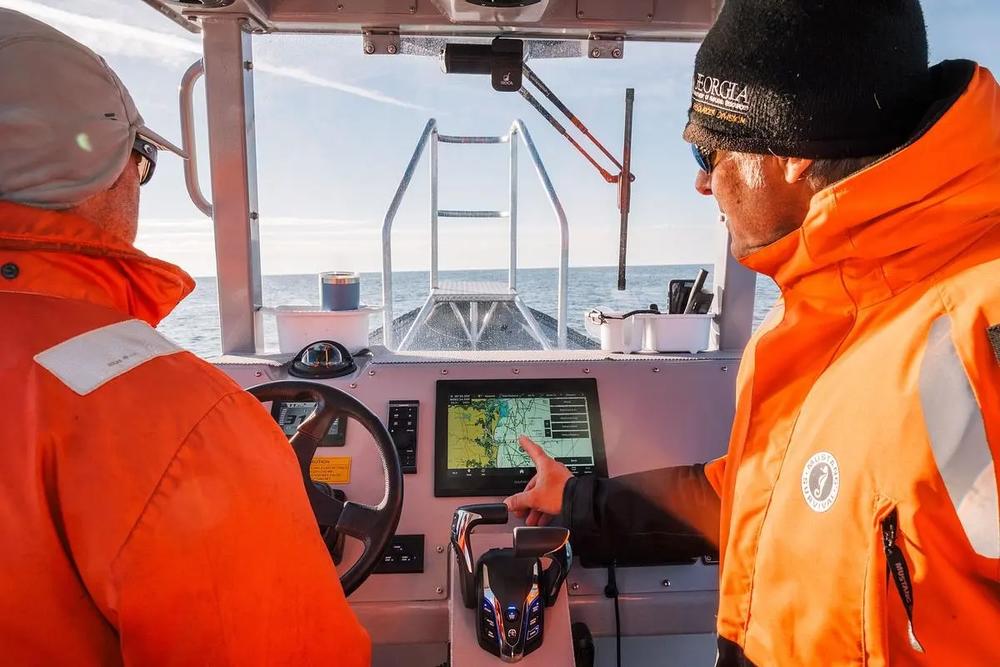
Senior Wildlife Biologist Mark Dodd uses GPS data relayed from the aerial survey team to locate an endangered North Atlantic right whale near St. Marys, Jan. 26, 2025.
At around 10 a.m., an observer on a nearby dredge calls in a sighting, and the plane is sent to search the area. Once on scene, the biologists aboard the plane spot a juvenile North Atlantic right whale and relay the information to the boat crew. Using GPS coordinates sent by the plane crew, Senior Wildlife Biologist Mark Dodd plots a course to the location provided.
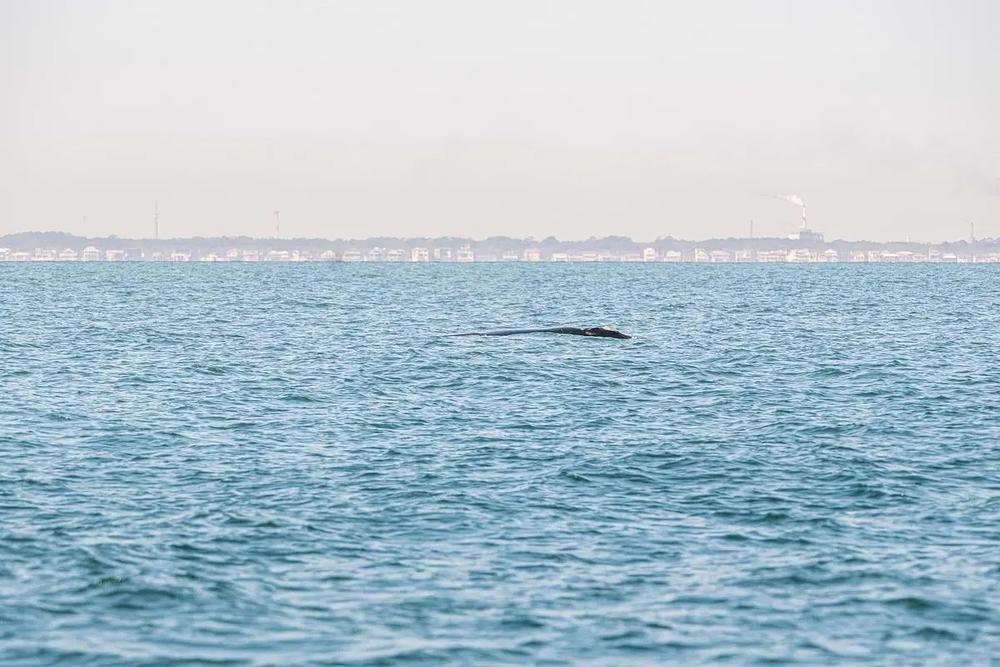
A juvenile endangered North Atlantic right whale near St. Marys, Jan. 26, 2025 (GADNR/NOAA Permit #26919)
With the plane circling overhead at 1,000 feet, precise location and identification details are relayed from the aircraft. After several minutes, the young whale breaches the surface for a few seconds and the boat crew spots it.
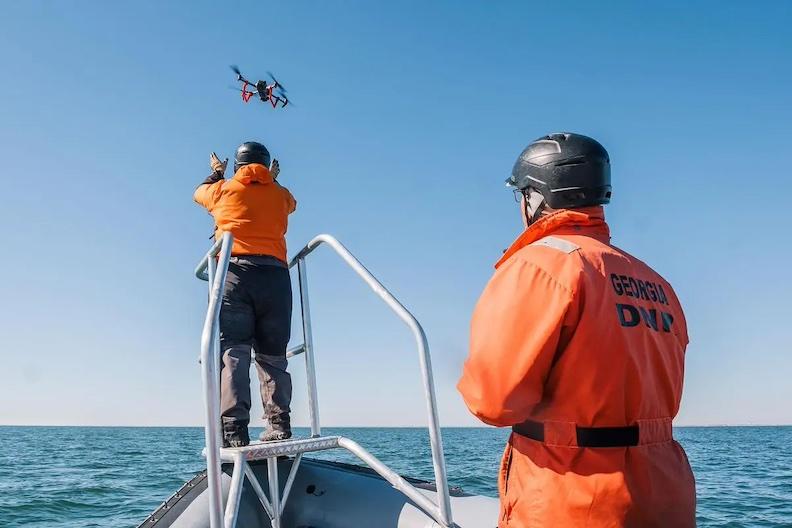
Senior Wildlife Biologist Jessica Thompson and Wildlife Technician Trip Kolkmeyer deploy a drone to search for an endangered North Atlantic right whale near St. Marys on Jan. 26, 2025. Drones are used to locate, identify, and document individual whales.
With the whale in sight, the boat crew launches a drone to track and identify the young whale. Using photos taken from the boat and by drone, efforts are made to identify the whale using a photo catalog maintained by the New England Aquarium.
After an hour and a half of tracking and attempting to identify the juvenile whale, the biologists determine this whale has yet to be seen this season, and the team will need to collect a biopsy sample for DNA analysis to determine its sex and identify its close relatives.
As the crew attempts to get close enough to collect a sample, the whale breaches 100 feet from the boat. It’s up just long enough for it to take a couple of breaths of air. Then the whale dives deep again.
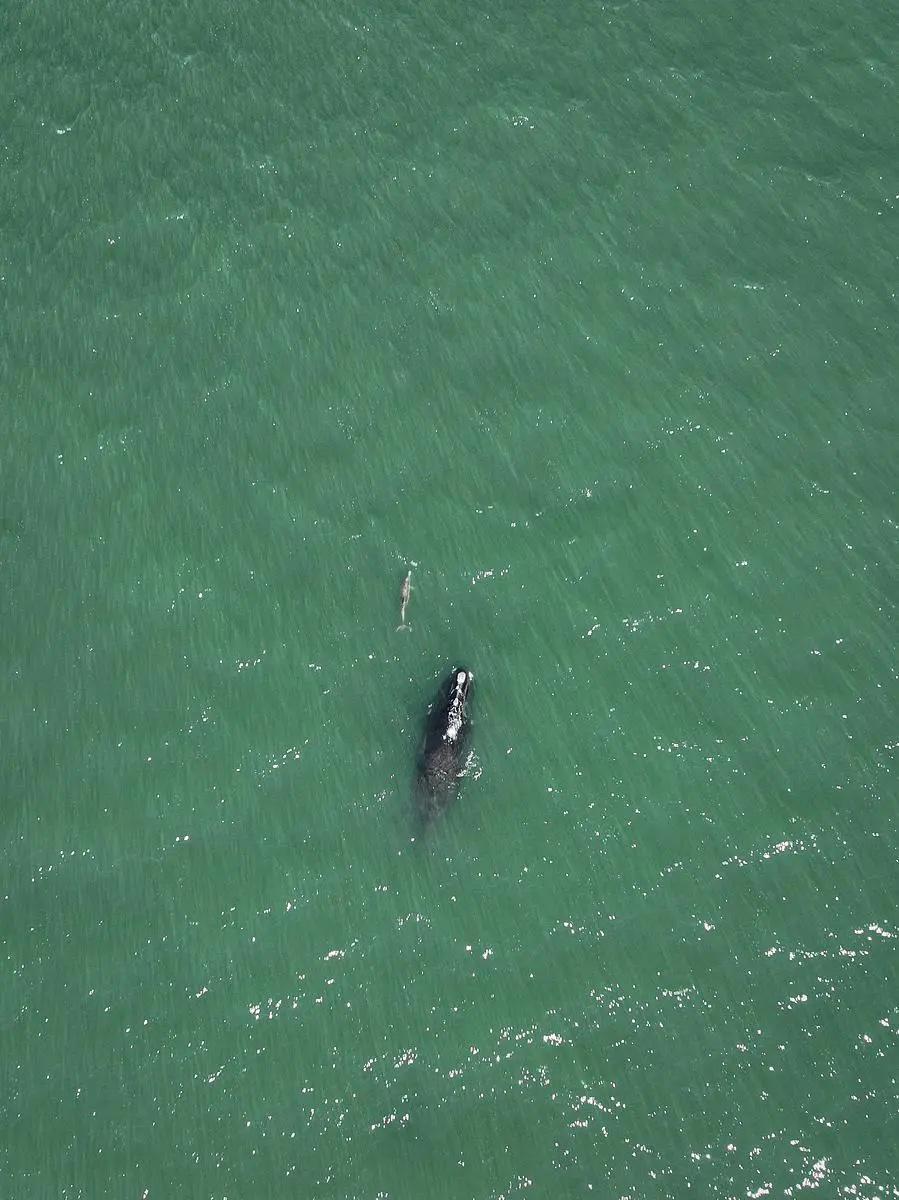
A juvenile endangered North Atlantic right whale accompanied by a dolphin near St. Marys, Jan. 26, 2025 (GADNR/NOAA Permit #26919)
Using a drone overhead, Wildlife Technician Trip Kolkmeyer scans the ocean for signs of water disturbed by the whale’s powerful tail and relays the information to Dodd, who’s steering the vessel from its observation tower. Dodd estimates the whale’s direction and speed to continue to trail it.
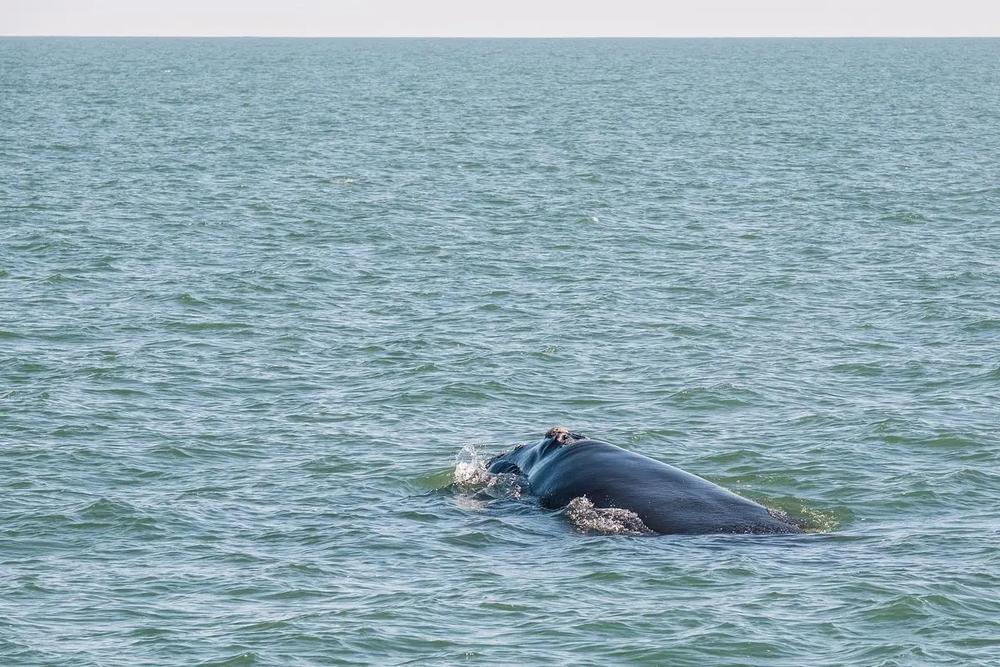
A juvenile endangered North Atlantic right whale near St. Marys on Jan. 26, 2025 (GADNR/NOAA Permit #26919)
After a 15-minute dive, the whale pops its head up 50 feet from the boat and sprays a plume of seawater as it exhales through its blow holes. Dodd accelerates and flanks the whale, close enough for Senior Wildlife Biologist Jessica Thompson to take her shot.
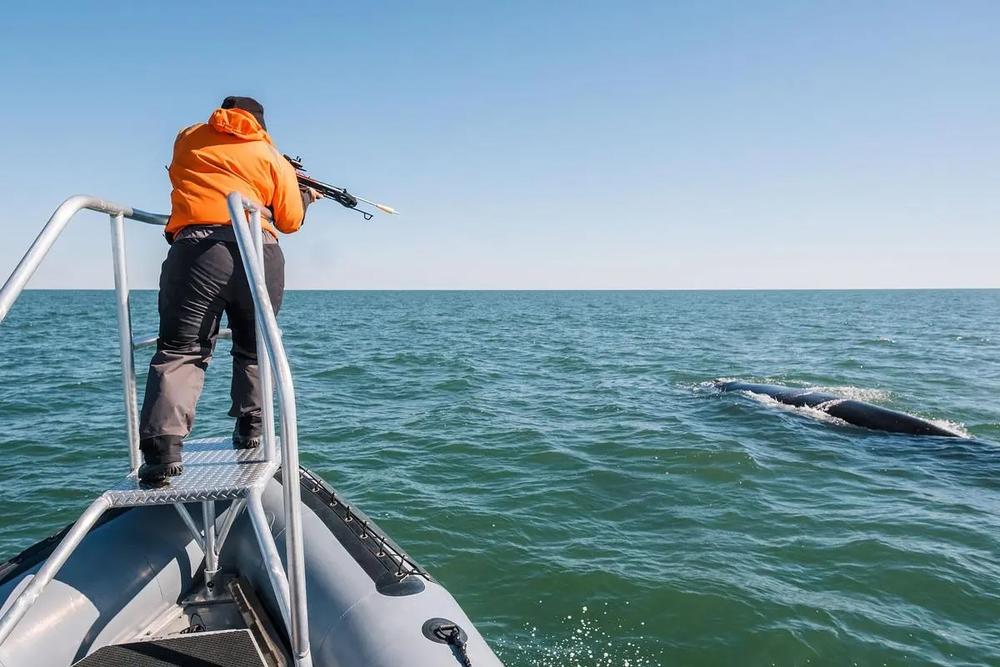
Senior Wildlife Biologist Jessica Thompson uses a specialized crossbow to collect a skin and blubber sample from a juvenile endangered North Atlantic right whale near St. Marys, Jan. 26, 2025. The samples are sent to a lab for DNA testing to determine the whale’s identity, health, sex, and genealogy. (GADNR/NOAA Permit #26919)
Thompson uses a specialized crossbow to shoot a hollow tip arrow into the whale’s side to collect a small skin and blubber sample.
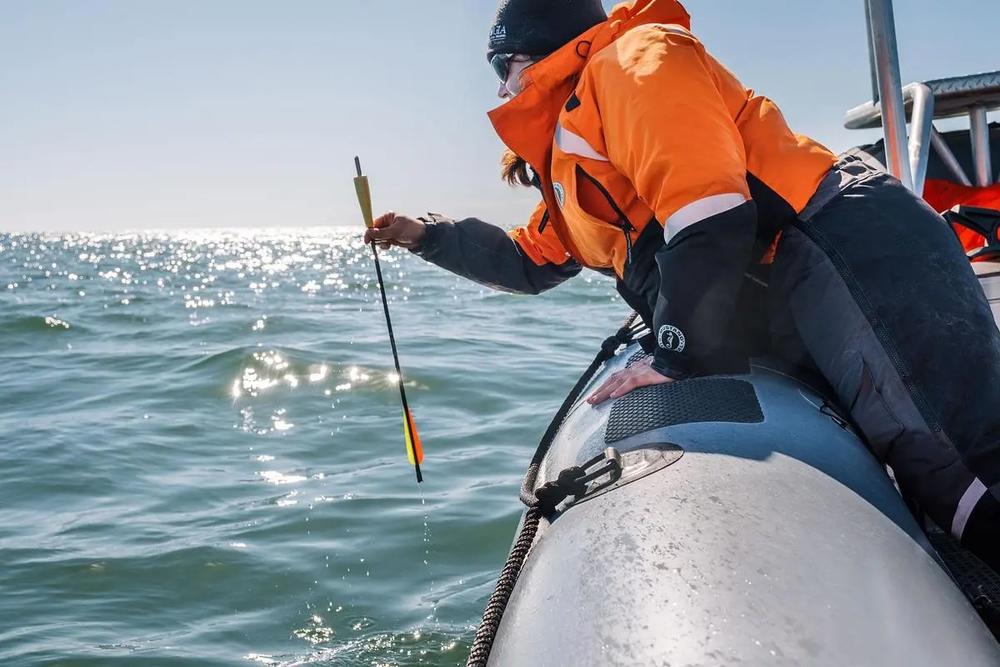
Senior Wildlife Biologist Jessica Thompson retrives a skin and blubber sample from a juvenile endangered North Atlantic right whale near St. Marys, Jan. 26, 2025. The samples are sent to a lab for DNA testing to determine the whale’s identity, health, sex, and genealogy.
As the arrow hits the whale, the hollow cylinder bores in about 2 cm, stopped by its foam collar. The arrow then bounces off and floats in the water, where Thompson scoops it up by hand.
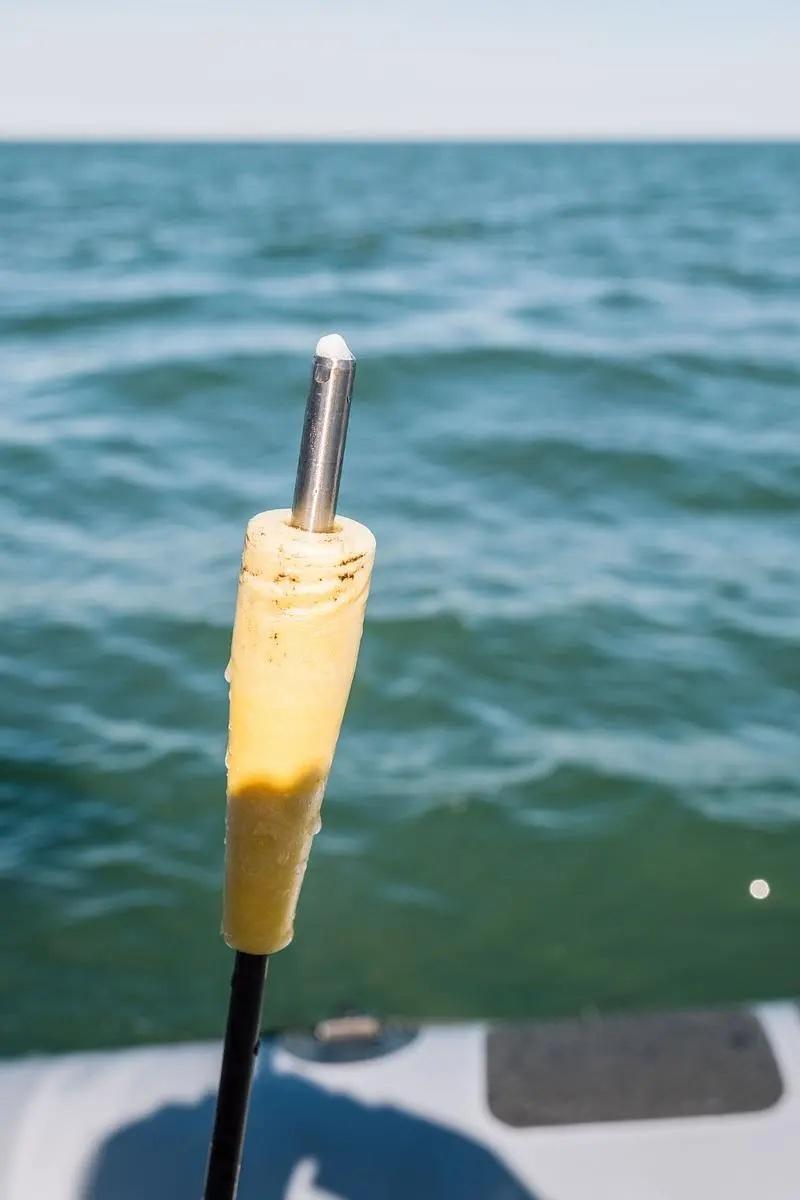
A skin and blubber sample taken from a juvenile endangered North Atlantic right whale near St. Marys, Jan. 26, 2025. The samples are collected using a specially designed crossbow bolt and sent to a lab for DNA testing to determine the whale’s identity.
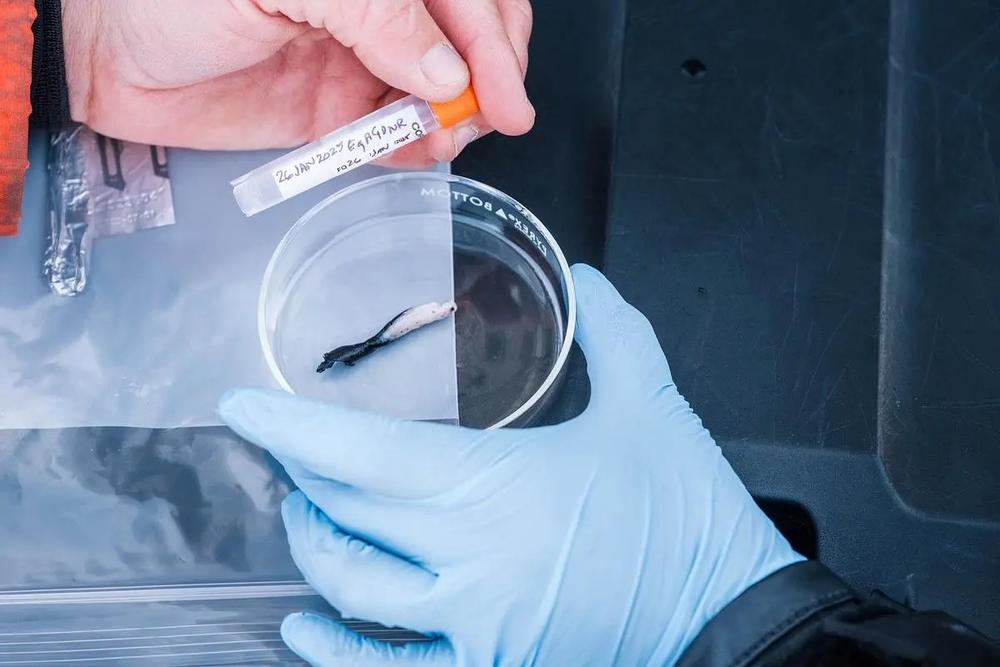
A skin and blubber sample taken from a juvenile endangered North Atlantic right whale near St. Marys, Jan. 26, 2025. The collected samples are sent to a lab for DNA testing to determine the whale’s identity.
Once aboard, Thompson pulls the sample out with sterilized tweezers, logs it into a labeled tube that Kolkmeyer freezes in a cryogenic tank. It will eventually be sent to St. Mary’s University in Nova Scotia for genetic analysis.
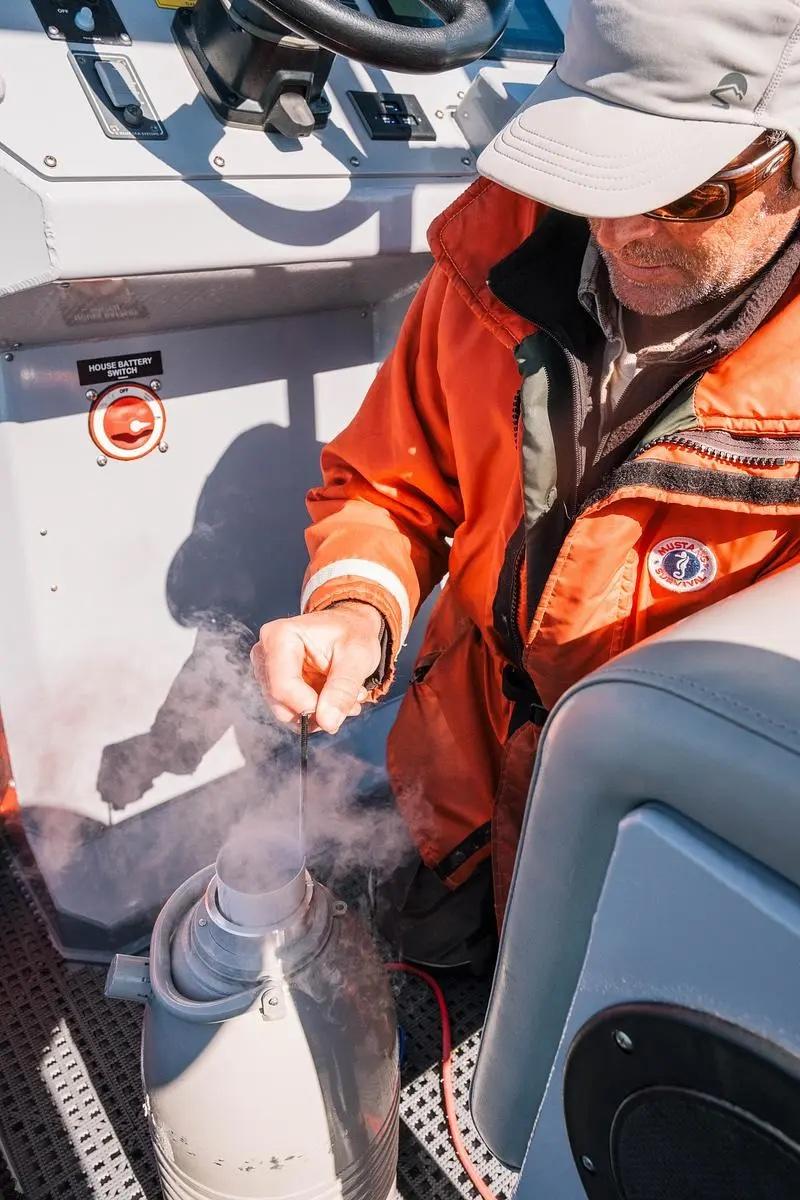
A skin and blubber sample taken from a juvenile endangered North Atlantic right whale is frozen in liquid nitrogen near St. Marys, Jan. 26, 2025. The collected samples are sent to a lab for DNA testing to determine the whale’s identity.
Due to the sensitive status of the North Atlantic right whale, as few biopsies as possible are collected from each individual. This unknown juvenile may have been previously biopsied as a calf, before the unique markings used for photo identification appeared on its head. This sample will confirm its identity. All of the information that can be gathered from the whale is uploaded to a database and shared with other researchers along the Atlantic coast.
To learn more about recent whale sighting along the Georgia coast visit: GA DNR Right Whales.
This story comes to GPB through a reporting partnership with The Current.